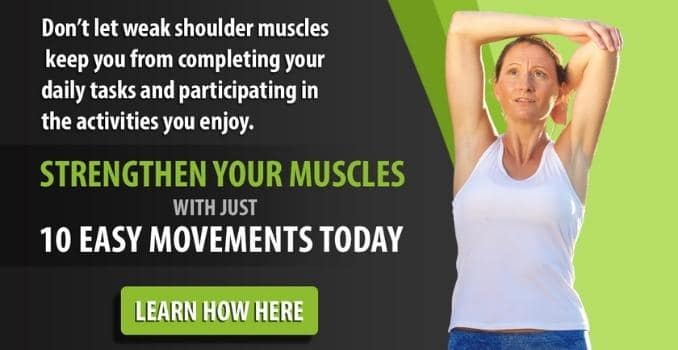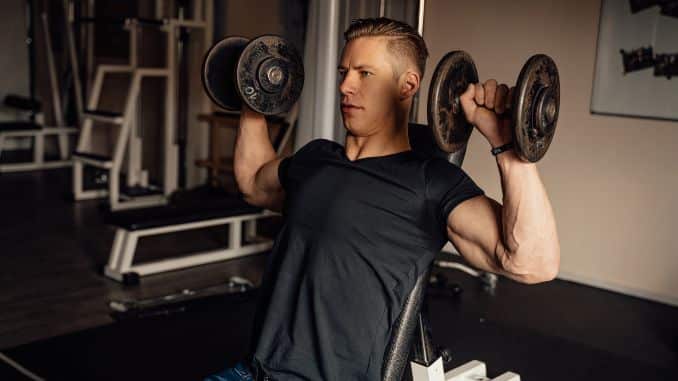
Are you looking to build strong and defined shoulder muscles? Look no further because this shoulder exercises list has got you covered! Whether you’re a beginner trying to sculpt your shoulders or an experienced lifter looking to take your gains to the next level, this article will provide you with all the tips, workouts, and nutrition advice you need for shoulder development.
Developing well-built shoulders enhances your physique but also improves your overall upper body strength and posture. In this comprehensive guide, we will walk you through the best exercises and techniques to target all three heads of your shoulder muscles – the anterior (front), medial (side), and posterior (rear) deltoids.
From compound movements like the overhead press and push-ups to isolation exercises like lateral raises and bend-overs, we’ll cover the workouts that yield the best results. Plus, we’ll share valuable nutrition tips to fuel your shoulder muscle growth and promote recovery.
Get ready to unveil those sculpted shoulders you’ve always dreamed of. Let’s dive in and start building those boulder-like deltoids!
Anatomy of the Shoulder Muscles
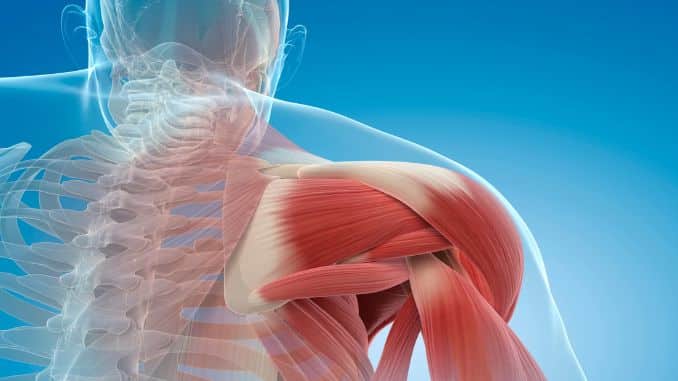
Before we dive into the exercises and workouts, let’s first understand the anatomy of the shoulder muscles. The shoulder is a complex joint [²] that consists of several muscles, but the three main muscles we’ll focus on are the anterior (front), medial (side), and posterior (rear) deltoids.
The anterior deltoid is responsible for shoulder flexion [¹], which is the movement of raising your arms in front of you. The medial deltoid helps with shoulder abduction, which is the movement of raising your arms to the side. The posterior deltoid assists in shoulder extension, which is the movement of pulling your arms back.
Understanding the functions of these muscles will help you target them effectively during your workouts and achieve optimal muscle development.
The Importance of Shoulder Muscles in Overall Fitness

Well-developed shoulder muscles are essential for aesthetic purposes and play a crucial role in overall fitness. Strong shoulder muscles improve upper body strength, stability, and posture. They also enhance performance in various sports and activities, such as lifting, throwing, and pushing.
Neglecting shoulder muscle development can lead to muscle imbalances, which can result in poor posture, limited range of motion, and increased risk of injuries. Therefore, it’s important to include shoulder exercises in your workout routine to maintain a well-rounded and functional physique by building muscles.
Tips for Building Shoulder Muscles Safely and Effectively
When it comes to building shoulder muscles, it’s important to prioritize safety and effectiveness. Here are some tips to help you achieve your goals while minimizing the risk of injury:
1. Perform Warm-Ups

Before starting any shoulder workout, warm-up exercises are essential for preparing your shoulders and entire body for the workout. Incorporate movements that target shoulder mobility, such as arm circles, shoulder rolls, arm swings, and shoulder dislocations. Additionally, include dynamic stretches that target the muscles around the shoulder joint, such as shoulder flexion and extension, internal and external rotation, and scapular mobility exercises.
These exercises help increase blood flow, loosen tight muscles, and improve joint range of motion, reducing the risk of injury during workouts.
2. Start with Light Weights

Beginners or individuals returning to shoulder exercises after a break should begin with light weights to allow their muscles, tendons, and ligaments to adapt gradually. Start with weights that allow you to perform exercises with proper form and technique without compromising joint stability. Focus on mastering the movement patterns and engaging the correct muscles before progressing to heavier weights.
Gradually increase the weight as you become more comfortable and confident with the exercises, ensuring that you maintain control throughout the entire range of motion.
3. Focus on Proper Form

Proper form is critical for targeting the shoulder muscles effectively and minimizing the risk of injury. When performing shoulder exercises, pay close attention to your posture, alignment, and movement mechanics. Keep your shoulders down and back, engage your core muscles to stabilize your spine, and avoid excessive arching or rounding of the back. Maintain a neutral spine position and avoid shrugging your shoulders or hunching forward, which can place unnecessary strain on the shoulders and increase the risk of injury.
If you’re unsure about proper form, consider working with a qualified fitness trainer to ensure you’re performing exercises correctly.
4. Gradually Increase Intensity
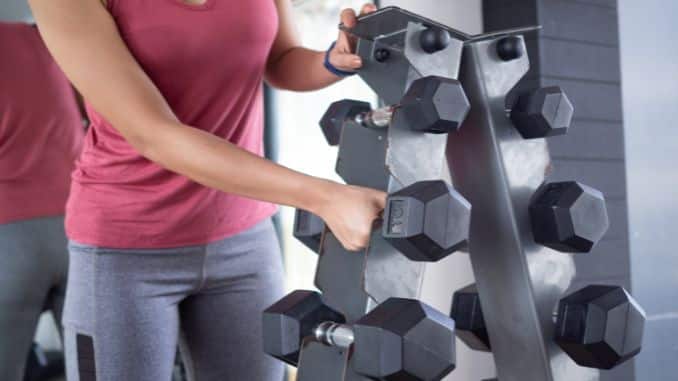
Progressive overload is key for stimulating muscle growth and strength gains in the shoulders. As you become stronger and more experienced, gradually increase the intensity of your workouts by progressively overloading the muscles. This can involve increasing the weight you lift, performing more repetitions or sets, or incorporating advanced variations of exercises. However, it’s essential to progress gradually and avoid sudden jumps in intensity, as this can increase the risk of overuse injuries or muscle strains.
Listen to your body and adjust the intensity of your workouts based on your individual strength and fitness level.
5. Allow for Sufficient Recovery
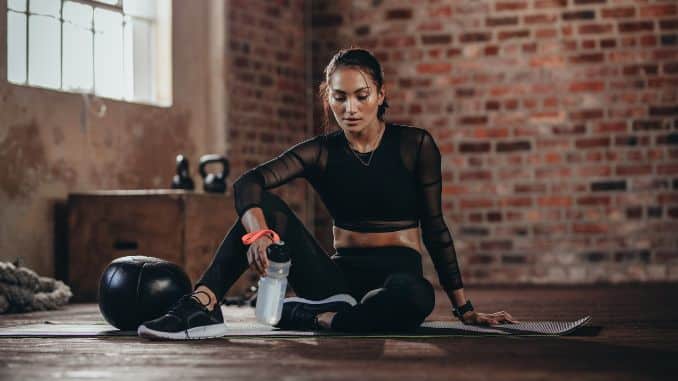
Adequate rest and recovery are crucial for muscle growth and shoulder pain, especially in the rotator cuff muscles. Listen to your body and avoid overtraining. Include rest days in your workout schedule and prioritize sleep and proper nutrition for optimal recovery. Excessive exercise without adequate rest can lead to fatigue, decreased performance, and an increased risk of injury. Prioritize quality sleep, proper nutrition, and hydration to support optimal recovery and muscle repair.
Additionally, consider incorporating techniques such as foam rolling, stretching, and massage to help alleviate muscle tension and improve recovery between workouts.
Warm-Up Exercises For Building Shoulder Muscles
Before we get into pain and gain, we have to condition our body first to avoid strain and possible injuries to the shoulder joint, deltoid muscle, anterior deltoids, and various other muscle groups. This ensures that you get the best shoulder exercises ever.
1. Lateral Raise
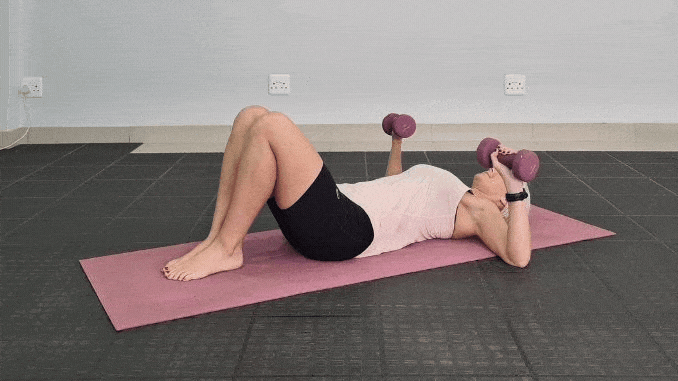
You can use a dumbbell or a can of soup for this exercise.
- Begin in an upright standing position with your feet shoulder-width apart, maintaining good alignment with your head, shoulders, hips, and legs.
- Place your hands at your side while holding weights or dumbbells. Engage your core, then lift both arms out to the sides at shoulder height.
- Lastly, gently flap your arms in a slow and controlled manner. Start with 3 sets of 10 repetitions.
2. Reach and Pull
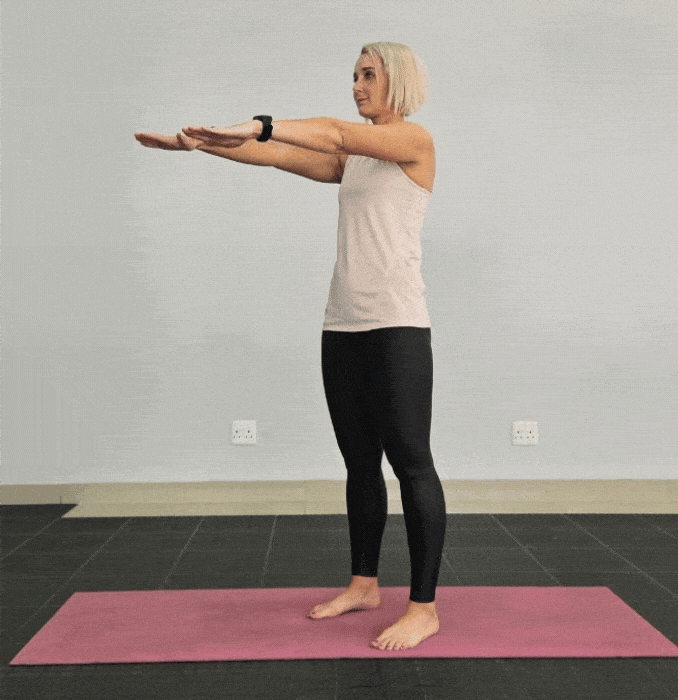
- Begin in an upright standing position with your feet shoulder-width apart, maintaining good alignment with your head, shoulders, hips, and legs. Engage your core.
- Extend both arms in front of your body at shoulder height.
- Pull your arms back, keeping your elbows in line with your shoulders and squeezing your shoulder blades together at the end position.
- Return to the starting position and repeat the movement.
3. Shoulder Rolls
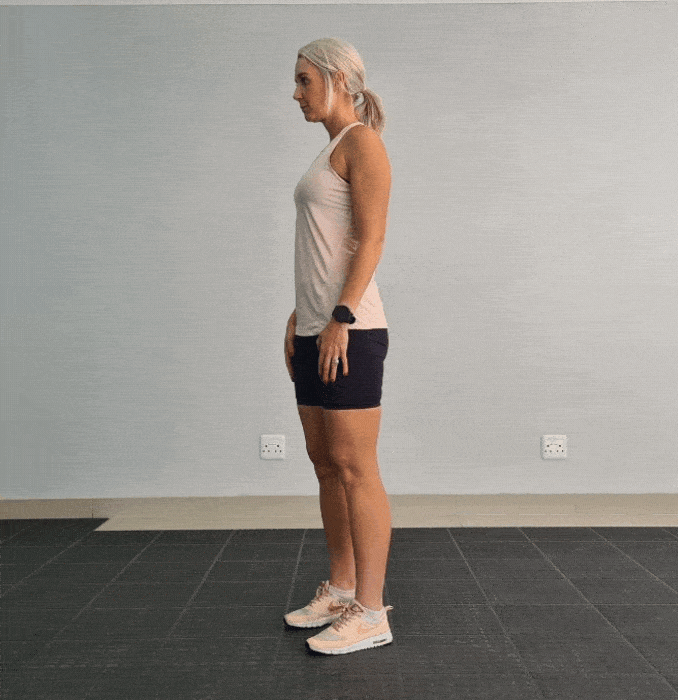
- Begin in an upright standing position with your feet hip-width apart, maintaining a good alignment with your head, shoulders, hips, and legs. Relax your arms at your sides and engage your core.
- Lift your shoulders, then roll them back until you feel resistance in your shoulder blades.
- Lower your shoulders to the starting position and repeat the movement.
- Relax, then repeat the movement in the opposite direction. Complete the movement for 5 repetitions for each motion.
Exercises For Building Shoulder Muscles
Now that you understand the importance of shoulder muscles and have some safety tips in mind, let’s explore the ten most effective exercises for building strong and sculpted shoulder muscles. These exercises target all three heads of the deltoids and provide a well-rounded workout for maximum muscle development.
1. Wall Push-Up
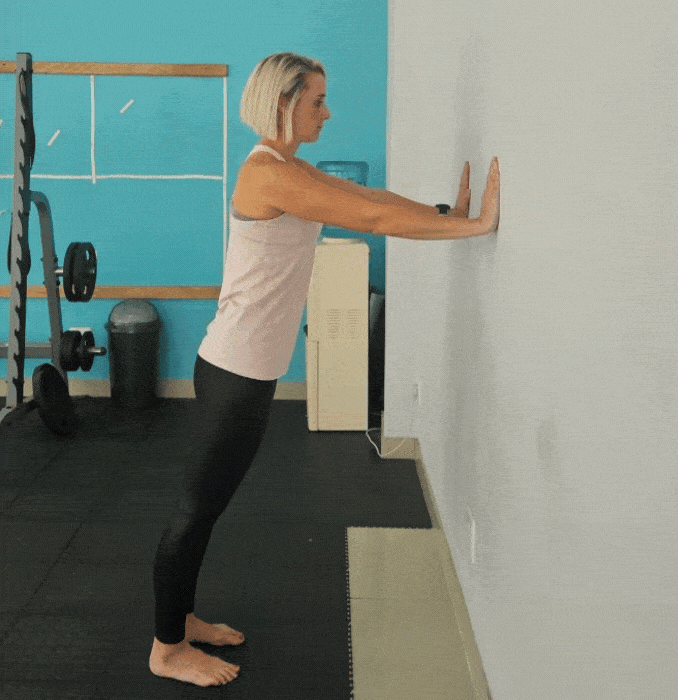
For this exercise, you can use a wall or a post for balance if needed.
- Begin in an upright standing position in front of the wall with your feet hip-width apart, maintaining good alignment with your head, shoulder, hips, and legs.
- Place both hands against the wall at shoulder height and step back with both feet to increase the angle of your body. Engage your core and bend your elbows to lower your upper body towards the wall, keeping your elbows tight to the side.
- Straighten your arms to return to the starting position and repeat the movement. Complete 3 sets, 10 repetitions.
2. Chest Press

For this exercise, utilize a dumbbell and a yoga mat for comfort.
- Lie on your back on the floor with your knees bent and feet flat on the floor, relaxing your upper body.
- Rest both arms down to the ground, holding dumbbells on each hand. Engage your core and lift both dumbbells upwards.
- Keep your arms aligned before lowering them back to the starting position.
- Repeat the movement. Start with 1 set of 10 repetitions.
3. T.Y.I
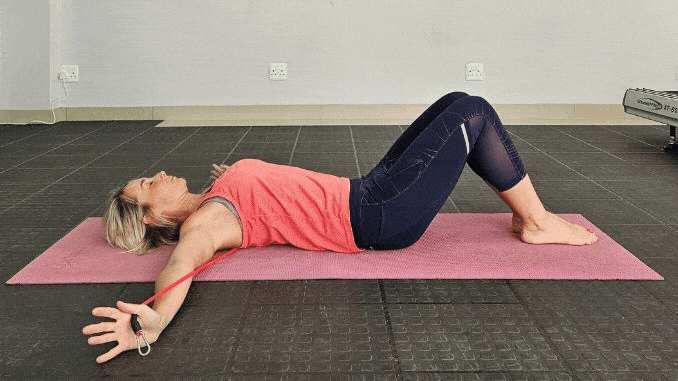
For this exercise, use an exercise band and a yoga mat for comfort.
- Lie on your back on the floor with your knees bent and feet flat on the floor, relaxing your upper body.
- Wrap the resistance band around your back while holding both ends of the exercise band on each hand. Engage your core and lift your arms sideways in good alignment with your shoulders in a “T” position. Slowly move your arms up, creating a “Y” position.
- Then, move your arms closer to your ears, creating an “I” position.
- Hold each position for a few seconds while creating resistance to the band with each position.
- Lower your arms to return to the starting position. Repeat the sequence of movements.
You can also do this exercise while in a standing or sitting position.
4. Bicep Curls to Shoulder Press
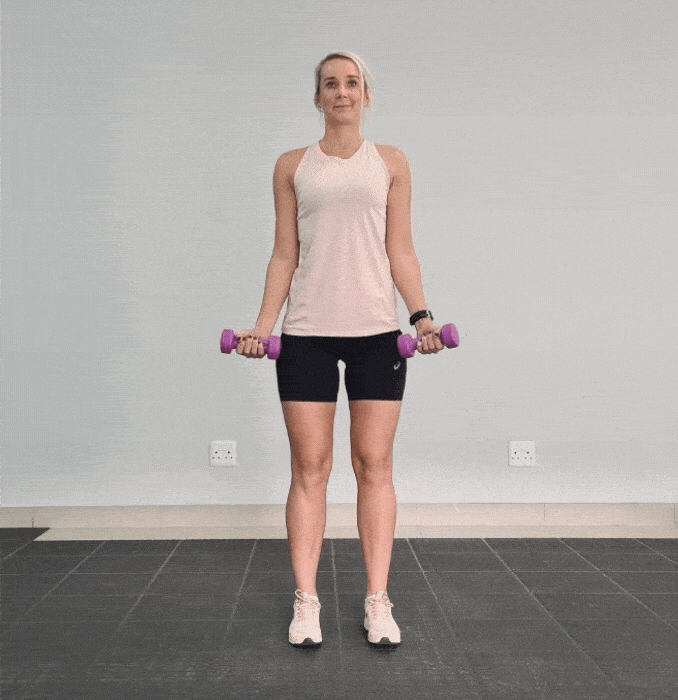
For this exercise, utilize a dumbbell or a can of soup.
- Begin in an upright standing position with your feet hip-width apart, maintaining good alignment with your head, shoulders, hips, and legs.
- Hold a dumbbell with the same weight on each hand with both palms facing outward. Engage your core and bend your arms to bring the dumbbells to shoulder height.
- Then, spread the arms with a slight bend outwards. Lastly, lift both dumbbells upward. Hold that position for a few seconds.
- Then, lower your arms to the starting position and repeat the movement. Start with 1 set of 10 repetitions.
Nutrition for Building Shoulder Muscles
Proper nutrition is essential to maximizing muscle growth and recovery. Here are some key nutrition tips to support shoulder muscle development.
1. Adequate Protein Intake
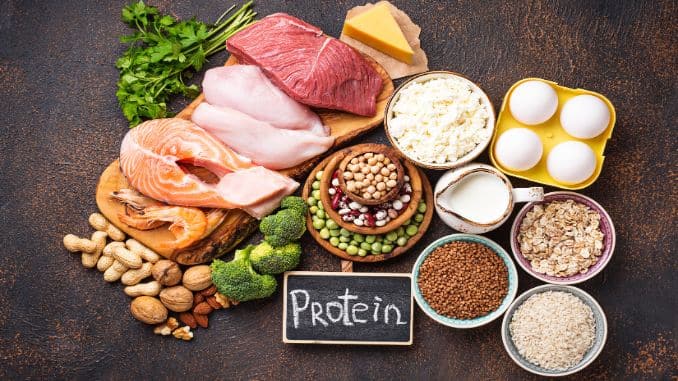
Protein is composed of amino acids, which are the building blocks of muscle tissue. When you engage in strength training or any form of resistance exercise, you create micro-tears in your muscles. Adequate protein intake provides the necessary amino acids to repair and rebuild these muscles, leading to growth in the shoulder muscles.
Aim for a protein intake of around 0.8-1 gram of protein per pound of body weight per day, though individual needs may vary based on factors such as activity level, age, and muscle mass goals.
2. Increase Caloric Intake
Building muscle requires energy, and consuming more calories than you burn your caloric intake provides the fuel your body needs to support muscle growth. However, it’s important to focus on nutrient-dense foods to ensure that the extra calories support muscle growth rather than simply adding excess body fat.
Quality carbohydrates provide energy for workouts, healthy fats support hormone production and overall health, and protein is essential for muscle repair and growth.
3. Micronutrient-Rich Foods

While macronutrients (protein, carbohydrates, and fats) are crucial for building shoulder muscles, micronutrients play a key role in supporting overall health and optimizing muscle function. Fruits, vegetables, whole grains, nuts, seeds, and healthy fats are rich sources of vitamins, minerals, and antioxidants.
These nutrients support various physiological processes involved in muscle growth, recovery, and repair. Having these nutrients before and after a workout is important if you want the energy to keep going or have enough left in the tank for your other activities.
4. Hydration

Proper hydration is essential for maintaining optimal muscle function and supporting physical performance. Water is involved in numerous physiological processes, including nutrient transport, temperature regulation, and waste removal. Dehydration can impair all the muscles [³], cripple your endurance, and especially recover from an injury. Additionally, electrolytes such as sodium, potassium, and magnesium play key roles in muscle contraction and fluid balance.
Ensure you drink water throughout the day and consider consuming electrolyte-rich fluids during intense workouts or in hot environments to replace fluids lost through sweat. Without proper hydration, it can lead to decreased performance, muscle cramps, and other heat-related illnesses.
5. Meal Timing

Strategic meal timing can optimize muscle growth and recovery by providing the necessary nutrients when your body needs them most. Consuming a balanced meal containing protein, carbohydrates, and healthy fats within 1-2 hours before and after your shoulder workouts can help fuel your other activities, support muscle repair, and replenish glycogen levels. Pre-workout meals provide energy for exercise, while post-workout meals promote muscle repair and growth by supplying essential amino acids and carbohydrates to replenish glycogen stores.
However, individual preferences and tolerance should be considered, as some people may prefer to work out on an empty stomach or have specific dietary needs. The key is consistency and ensuring that you’re meeting your overall nutrient and calorie needs throughout the day.
Conclusion
Building strong and sculpted muscles through shoulder exercises not only enhances your physique but also improves your overall upper body strength, stability, and posture. By targeting the anterior, medial, and posterior deltoids with a combination of compound and isolation exercises, you can achieve well-rounded shoulder muscle development.
Remember to prioritize safety by warming up, starting with light weights, focusing on proper form, gradually increasing intensity, and allowing for sufficient recovery. Combine your workouts with a well-balanced diet that provides adequate protein and nutrients to fuel muscle growth and promote recovery.
With dedication, consistency, and the right exercises and nutrition, you can unlock the secrets of power shoulders and achieve the sculpted deltoids you’ve always dreamed of. So, get ready to hit the gym, follow these tips, and start building those boulder-like shoulders!
Transform your shoulders with our comprehensive guide, filled with pro tips, workouts, and nutrition advice. Don’t miss our ‘10 Easy Movements for Stronger Shoulders‘ to get you started. Begin your shoulder-sculpting journey now!


